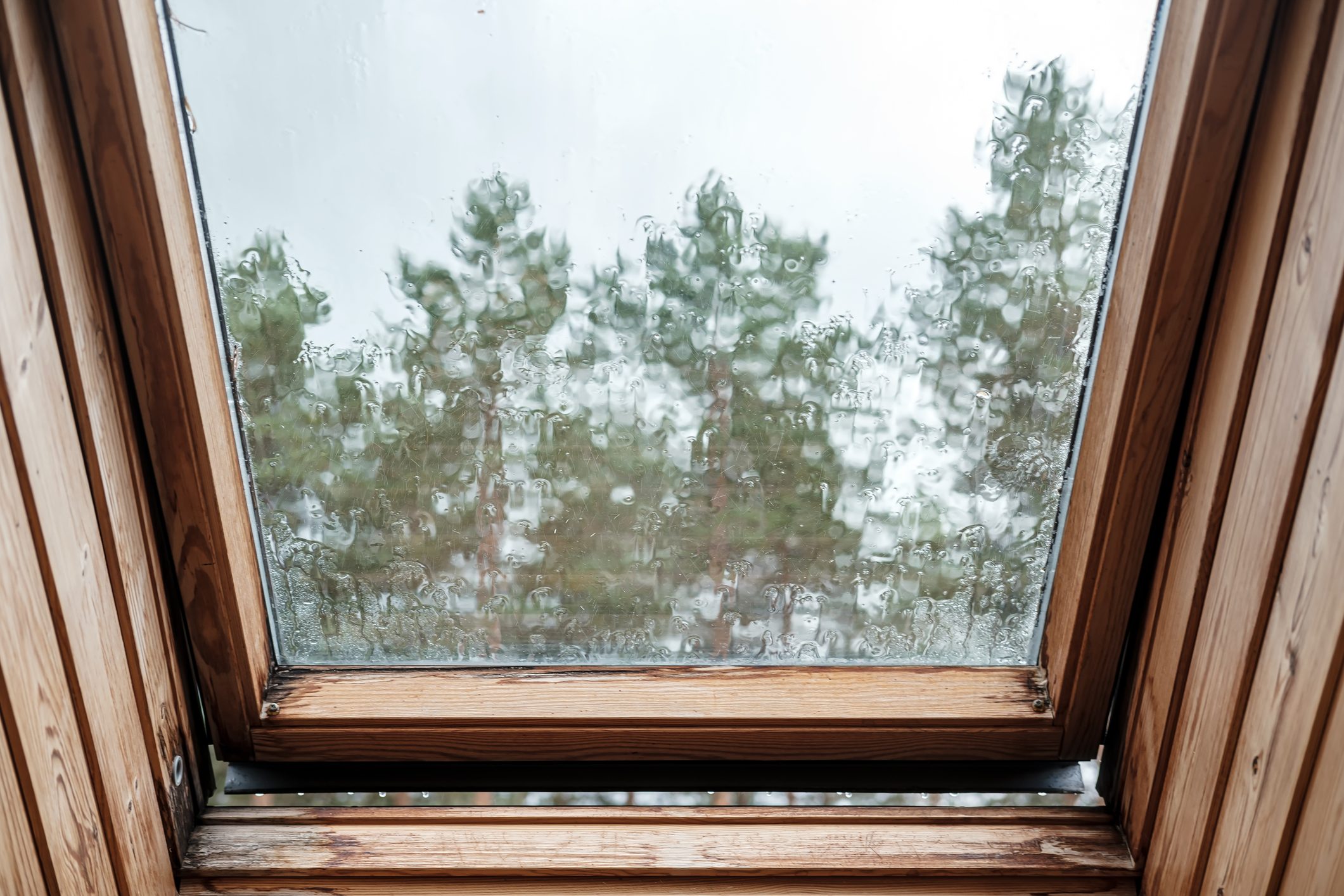If your skylight's leaking, often you can do the repair yourself. First, you have to figure out where the water is coming from.

Tips for Fixing a Leaking Skylight

On a cloudless day, a skylight lets the sun shine into your house. When it’s rainy, a skylight shouldn’t let anything in, especially the rain.
If your skylight leaks, don’t wait to fix it. A small leak could indicate water collecting around the skylight that could rot the roof decking.
Maryland general contractor Alan Hill warns that major skylight repair jobs aren’t DIY-friendly. However, he says homeowners can find and seal most leaks if they have the right equipment.
Hill adds the problem may not even be a leak — it could be condensation. And if it is a leak, it may not be coming from the skylight itself, but from another part of the roof. Roof leaks tend to be insidious that way.
Note: Roof work is dangerous, so follow recommended safety guidelines for setting up and working from your ladder. Always use the proper safety equipment, including non-slip shoes and a roof safety harness. If the roof is too steep to walk on comfortably, or you have any concerns at all, hire a pro.
On This Page
Pinpoint the Source of the Leak
When you see water dripping from your skylight, put something under the drip to catch the water. Then try to determine where the drip originates. You’ll probably need a stepladder for a close-up view from indoors.
Condensation
While you’re examining the skylight, look for signs of condensation on the glass. If you find any, you’ll probably notice it collects at certain points and drips from there.
The best remedy for condensation is ventilation. If the skylight doesn’t open, consider using a fan to improve air circulation. Hill also recommends going on the roof and clearing obstructions from the weep holes, the tiny holes on the lower part of the skylight frame that allow condensation to drain. This will prevent the skylight glass from clouding up.
Faulty skylight
If the skylight opens, check the rubber gasket around the frame for signs of deterioration or mold. That would indicate the skylight isn’t sealing all the way and moisture is dripping between the window casing and the frame.
To remedy this, you may need to replace the gasket. You may also find bits of debris preventing the skylight from closing all the way. Removing them may stop the leak.
Your inspection may reveal moisture around a cracked section of the skylight. Although it may be possible to remove the cracked part and repair it, in most cases you’ll have to replace the entire skylight.
Faulty roof flashing
Once you’ve eliminated condensation and skylight defects, any water you see must be coming through the roof. It’s either seeping under the flashing or getting through the seal between the flashing and the skylight.
If it’s coming from the frame on the upper part of the roof slope, that’s easier to diagnose and repair than if it’s coming from the lower part of the frame. Water tends to travel along the roof decking, so a leak from the lower part could originate from anywhere on the roof. One from the upper part is almost always from the skylight flashing.
Reseal the Flashing
If you determine the water is indeed coming from the flashing, the next step is to go on the roof with a caulk gun and the appropriate sealant. Hill recommends sealant designed specifically for roof flashing, such as Loctite Roof & Flashing Sealant. Butyl and silicone sealants are not recommended for this project.
The damage may be easy to spot. You may find parts of the existing sealant have chipped or crumbled away from exposed flashing. In that case, scrape off all the loose bits with a putty knife and apply a bead of new sealant to the exposed area.
To examine the parts of the flashing that sit flush against the roof, you’ll need to peel back the shingles. Apply the sealant generously to the edges of the flashing, especially along the head of the skylight on the upper part of the roof. Remember that any water seeping under the flashing at the top of the skylight can trickle down and drip from a lower part.
You May Need to Reinstall the Flashing
Quality skylights come with flashing, which Hill says is leakproof when installed correctly. Without knowing it, however, a DIY or inexperienced pro installer could damage the flashing by nailing it to the roof, which Hill says you should never do.
If you find nails, deteriorated or rusting flashing, or gaps in the step flashing along the sides of the skylight frame where shingles and flashing are layered, it’s probably best to rip up the shingles and redo the flashing.
If things reach this point, Hill recommends hiring a vetted contractor. That way you’ll be sure the proper flashing is used and installed correctly. It’s an extra expense, but it’s better than doing the job yourself and discovering the skylight still leaks.




















